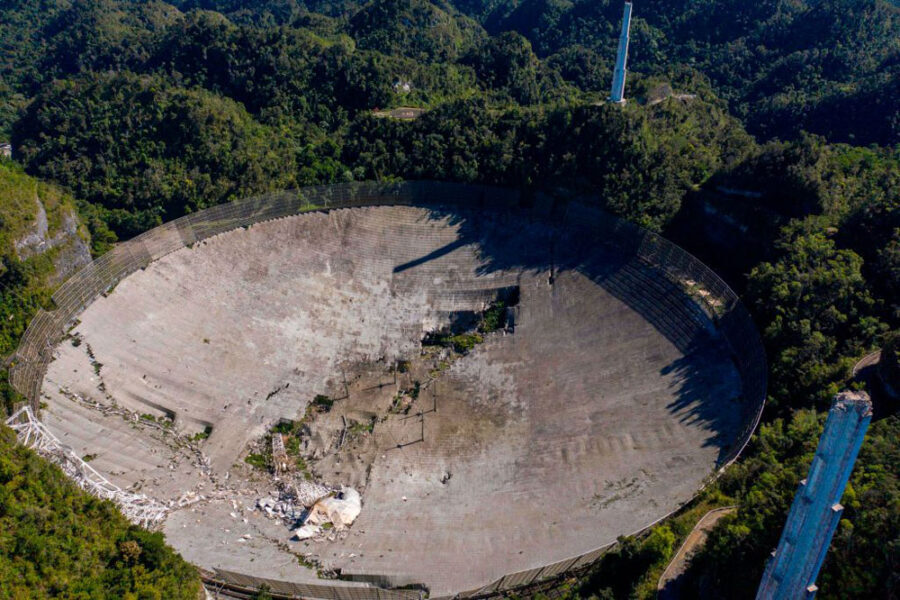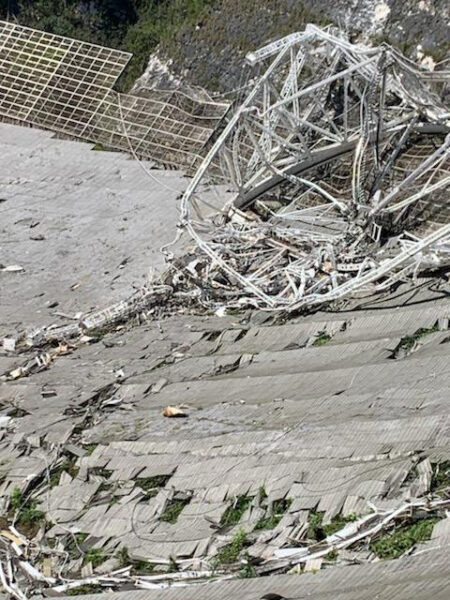
At 7:55 a.m. local time on December 1st, that ticking clock struck midnight. The National Science Foundation is reporting that the 900-ton platform, suspended over the dish via multiple cables to three support towers, has fallen.

Staff member Jonathan Friedman, who lives near the telescope, reported to the Associated Press that he heard the collapse as a rumble. When he ran to a hill overlooking the natural sinkhole that's home to the massive 305-meter radio dish, he could see the dust cloud coming up from the collapsed structure.
Twitter user Deborah Martorell shared a photo of the collapse from afar:
The collapse follows two cable failures within four months. First, a support cable wrenched out of its socket on August 10th, then a main cable snapped on November 6th. Two weeks later, the NSF announced that it would dismantle the telescope, while still supporting other onsite facilities, such as the LIDAR facility for geospace research. While engineers had assessed the structure after the first cable failure and replacement parts were on order, the second failure suggested the system could collapse at any time. Each cable is 8.25 centimeters thick and made of 160 wires, but drone footage of the remaining cables to that tower showed individual wires were breaking daily.
A preliminary assessment of the collapse indicates that the top section of all three of the support towers broke off. Then as the platform fell, the support cables also dropped. The falling cables seem to have significantly damaged the observatory's learning center.
The platform that collapsed was original to the 1960s construction but became significantly heavier in the 1990s, when new instruments were added. That upgrade — including a Gregorian reflector system to help focus radio signals and a powerful radar transmitter — made Arecibo the powerhouse radio observatory and radar facility it was until this past August. The upgrade also warranted additional support cables, and it was one of these support cables that came out of its socket in August. "[It] should not have failed the way it did," says Ashley Zauderer (NSF). "The team is looking very closely at why that happened."
"Our focus is now on assessing the damage, finding ways to restore operations at other parts of the observatory, and working to continue supporting the scientific community, and the people of Puerto Rico," says NSF director Sethuraman Panchanathan. Engineers and environmental workers are already arriving at the site to appraise the situation and begin repairs to the other onsite facilities.



I'd imagine there are better places for such a thing than a hot humid sea level environment..